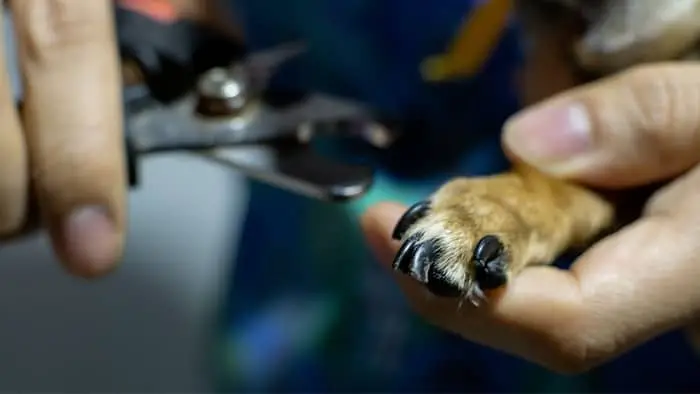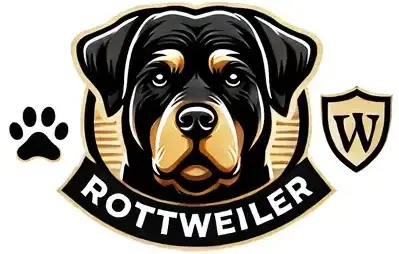Last Updated on April 24, 2024 by Dr. Julie
When is it too late to remove dewclaws from your dogs, whether as puppies or grown ones, and is it necessary you do so?
Most dog owners think their dog’s dewclaws need to be removed, but the removal is necessary only in cases of disease or severe injury.
Mostly, dewclaws are removed when the puppy is around 3 to 4 days old.
Table of Contents
When Is The Right Time To Remove The Dewclaws?
In most cases, dewclaws are removed at 3-5 days of age. Removing dewclaws on puppies is very simple as their bones are still soft and the muscle tissues are not fully developed. In this case, the puppy feels less pain. Some puppies don’t even squeak when the vet snips the dewclaws off.
If you don’t remove them at this age, you will have to wait until the dog is spayed to have them removed. Dewclaws can be removed in older dogs, but it is a more costly and painful process.
Most vets do not advise of this procedure unless it is for medical reasons only. Contact your veterinarian to discuss the reasons for or against dewclaws removal before it’s done.
Overall, to avoid the high costs of the anesthetic, have the dewclaw removed while your pup is still tiny. Carrying out both procedures at the same time also lessens the stress on your dog.
When Is It Too Late To Remove Dewclaws?
Many puppies are not taken to the vet when they are under 5 days. This implies they will be older when they need to remove their dewclaws. In addition, they will already be late!
That said, how late can you remove dewclaws? Well, dewclaws can be removed in older dogs—and at any age. However, it is more painful, traumatic to the dog, and costly because the tissues are already too hard. That’s why most vets recommend the procedure to be done in adult dogs only for medical rather than aesthetic reasons.
In case the dewclaws are not hanging loosely; instead, they are connected to the bone of the dog’s paw; vets will discourage the removal unless it is a medical emergency.
If you want the procedure done on your older dog, we recommend discussing it with your vet first. This gives you an understanding of the pros and cons of the dewclaw removal at this stage of your dog.
A vet will also help you estimate the overall cost of the process, given that it must be done under anesthesia.
How To Remove Dewclaws On Puppies
Front Dewclaw Removal
If your puppy’s dewclaw removal is to occur, it should be done at 3 days old. This simple procedure takes less than a minute and has less pain compared to the removal in adults. The removal happens without general anesthesia.
Some vets choose to use local lidocaine injection to block pain; nevertheless, the lidocaine injection hurts, and puppies still cry and feel some pain.
Once removed, some complications may surface, such as infection or regrowth of the nail.
Some breeders usually perform dewclaw removal themselves. Vets generally charge an exam fee per puppy and a dewclaw removal fee. Depending on the practice, the cost is around $30–$40 per puppy and above.
Rear Dewclaw Removal
If a puppy is born with floppy rear dewclaws, they can get injured more easily than well-developed ones.
Floppy dewclaws do not have much bony attachment to the ankle, so the removal is relatively easy.
Most puppies do not make it to get to a vet when they are 3 years old. So most puppies with rear dewclaws are older when the removal happens.
However, there is an additional cost for the dewclaw removal due to its age, and the puppy may be kept in bandages for 7–10 days and a dog collar. The dog collar keeps it from chewing on the bandages and the incision removing the sutures, and getting the wound infected.
Recovery from dewclaw removal in an older dog causes dogs and dog owners more headaches than recovery from spaying or neutering.
The dewclaw removal procedure costs vary significantly from vet to vet, and for each pup as follows,
Vets will charge a surgical fee, local anesthesia, or additional general anesthesia and a bandaging fee.
The surgical fee will be minimal; the dewclaw needs only a small skin incision to remove a dangly little nail. However, it will be more expensive if the dewclaw has a joint and must be cut off from the leg.
If any complications occur during the healing process, of course, there is a cost for that too.
Dewclaw Maintenance
Dewclaw requires trimming every few weeks to every few months. Generally, dogs don’t mind a quick trim of the dewclaws as much as they mind trimming the regular nails.
Rear dewclaws cause more problems than the front ones. It mostly suffers abnormal growth leading to a nail that grows quicker than the rest. It is also closer to the pad, making it more difficult to trim.

Injured Or Diseased Dewclaws
Injured or ripped dewclaws are common in dogs. And, the same for ingrown dewclaws. They can be painful and lead to infection, requiring a vet’s visit. Nail growths or bed infections can occur, affecting the dewclaw.
The treatment for an ingrown, injured, or diseased dewclaw varies significantly from one dog to another. The treatment may require general anesthesia, or if your dog presents the same dewclaw problem multiple times, dewclaw removal might be the best choice.
Final Thoughts
Learning when to remove the dewclaws is critical in the health of your puppies. Do not wait until it is too late to pull the dewclaws as they might get an infection and end up being too costly than usual.
Remember, those front dewclaws are normal in dogs, and the removal is not mandatory unless they develop a medical problem. If the dewclaws have no issue, learn to trim them often. Always pay particular attention to your dog’s nails and, more so, the dewclaws. If your dog has any injured nail, seek treatment for it.
Read more about: How Much Do Rottweilers Shed? A Very Hairy Guide
